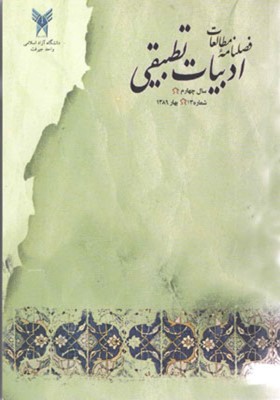رویکرد مشابه خیام و ژید در دعوت به خوش¬باشی
محورهای موضوعی : شعرمحبوبه فهیم کلام 1 , رامین محسنی 2
1 -
2 - عضو هیئت علمی دانشگاه آزاد اسلامی واحد اراک
کلید واژه:
چکیده مقاله :
گرچه در نگاه نخست مقایسۀ خیام، شاعر سدۀ پنجم هجری و ژید، نویسندۀ قرن حاضر فرانسه غریب مینماید، ولی به اندازۀ وجوه افتراق، شقوق اشتراک نیز دارند.اندیشۀ دعوت به خوش باشی در زندگی و بهرهمندی از لحظات آن، هستۀ فکری و شعری خیام را تشکیل میدهد. با تأمل در آثار ژید به ویژه " مائدههای زمینی" در مییابیم که آثار وی نیز تداعیگر همین مضامین هستند. از اینرو؛ در نوشتۀ حاضر روند پیوندهای ادبی- فلسفی این دو شاعر و نویسنده که در برخی موارد همگنیهای بسیاری بین آنها وجود دارد، بررسی میشود.این مقاله میکوشد تا با مقابلۀ آثار این دو اندیشمند با یکدیگر، رسالت فکری آنان را در ترویج اندیشۀ خوش باشی تبیین نماید و به موازات آن به مقایسه و تباین جهاننگری یک شاعر ایرانی با یک نویسندۀ فرانسوی بپردازد و از این رهگذر به تأثیر گذاری مضامین رباعیات خیام بر شکل گیری مفاهیم آثار ژید دست یابد.
Although it seems a little bit strange at first to compare Khayyam, the 5th century AH poet with the contemporary French writer André Gide but there are similarities between them as much as there are differences. The concept of gaining pleasure in life and enjoying its moments is central to Khayyam’s mind and poetry. By contemplating the works of André Gide especially “Fruits of the Earth” one understands that they also include similar themes. Thus the present article examines the literary-philosophical trends of these two poets which have a lot in common in this regard. This article tries to compare the works of these two scholars to clarify their intellectual attempts in promoting the idea of gaining pleasure and seizing the day and in parallel it attempts in explaining the ideology of a French writer and an Iranian poet while exploring how Khayyam’s poetry has affected the themes applied by André Gide.


